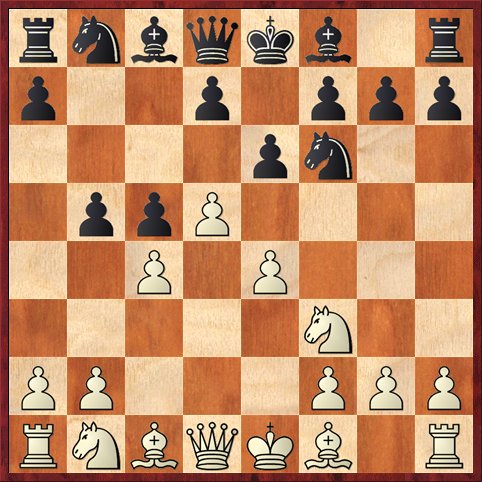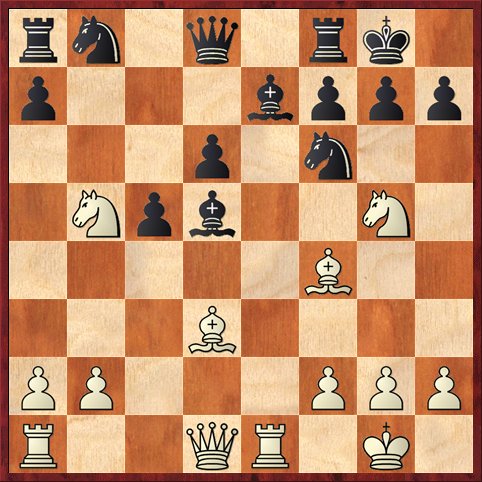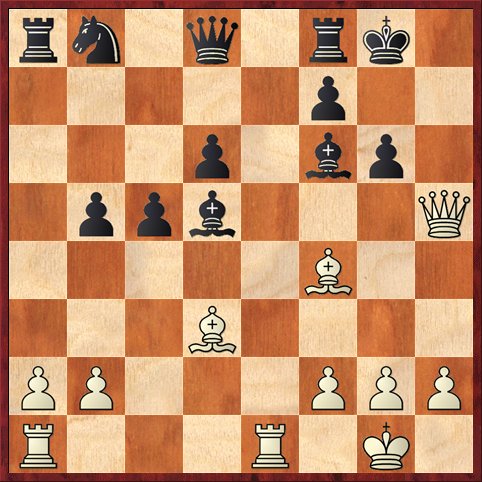Step aside, MadBum! There’s a new hero in town, and his name is VigPanch!
The San Francisco (baseball) Giants have Madison Bumgarner, the hero of the World Series. But the San Francisco (chess) Mechanics have Vignesh Panchanathan, the #4 fourteen-year-old in the country. There’s a very good argument that he has been their most valuable player this year in the U.S. Chess League.
Although Vignesh has played only 4 games out of 11 (a ten-game regular season plus the first week of the playoffs), he has won all four of them. His most recent win was an awe-inspiring crush of Kapil Chandran of the Connecticut Dreadnoughts, a key point in San Francisco’s 2½-1½ victory. That victory in the wild card round (reminiscent of the San Francisco Giants’ victory in the wild card round of the baseball playoffs) allows the Mechanics to move on to a quarterfinal match against the top-seeded Dallas Destiny. Click here to see the full playoff brackets.
There were so many great moments in Vignesh’s game that I scarcely know where to begin. But let’s start with the opening, a variation of the Blumenfeld Gambit that I have never seen before:
 FEN: rnbqkb1r/p2p1ppp/4pn2/1ppP4/2P1P3/5N2/PP3PPP/RNBQKB1R b KQkq – 0 5
FEN: rnbqkb1r/p2p1ppp/4pn2/1ppP4/2P1P3/5N2/PP3PPP/RNBQKB1R b KQkq – 0 5
Position after 5. e4. Black to move.
Panchanathan is White, Chandran is Black, and this position arose after 1. d4 Nf6 2. c4 e6 3. Nf3 c5 4. d5 b5 (the Blumenfeld Gambit) 5. e4!?
The Blumenfeld is Black’s most vigorous attempt to “punish” White for avoiding the Nimzo-Indian by playing 3. Nf3. Of course, such a sensible developing move should not really be punishable, and I think the Blumenfeld has always been seen as very sharp but a little bit unsound. The theoretical recommendation for White is 5. Bg5.
But what about Vignesh’s 5. e4!? I love this move! First, I firmly believe that playing a gambit against a gambit is psychologically strong. Black was expecting to sacrifice a pawn and get a scary attack — but instead the roles will be reversed. The sacrifice of the e-pawn allows White to develop his pieces naturally and quickly. And White’s pressure on the half-open e-file is hugely important, so he in no way regrets losing the e-pawn.
The first time this move was played, according to ChessBase, was in 1922, by Vladimir Vukovic (author of The Art of Attack in Chess) against Rudolf Spielmann (known as “The Master of Attack”). So it’s not a new move. You couldn’t ask for two more appropriate players than Vukovic and Spielmann to baptize a variation like this!
Spielmann played 5. … bc and eventually won the game. But curiously, that move has almost never been played again — only once in 57 games, according to ChessBase! The move that almost all Black players have chosen since then is 5. … Nxe4, and that is indeed what Chandran played.
The game continued 6. Bd3 Nf6. This is far more popular than the alternative 6. … Nd6, but this game has to make one wonder whether … Nd6 might be better.
Play continued 7. O-O Bb7 8. Nc3 Be7, all natural developing moves for both sides. But this is the last place where I can see a possible improvement for Black. I would suggest playing 8. … b4, partly to hold onto the pawn but also to trade off some material. After 8. … b4 9. Ne4 (9. Nb5? a6!) Nxe4 10. Bxe4 has been seen in only one game, and here I would suggest 10. … f5!? The only previous game, Lazaro Porta-Barrero Garcia 2006, went 10. … Be7 11. Re1 Qb6 12. Bg5 f6 and Black’s kingside ended up being too weak.
After 9. Nxb5 Chandran tried to win back the pawn with 9. … ed 10. cd Bxd5, but Panchanathan just kept pounding him with one forcing move after another: 11. Bf4 d6 12. Re1 O-O 13. Ng5!
 FEN: rn1q1rk1/p3bppp/3p1n2/1Npb2N1/5B2/3B4/PP3PPP/R2QR1K1 b – – 0 13
FEN: rn1q1rk1/p3bppp/3p1n2/1Npb2N1/5B2/3B4/PP3PPP/R2QR1K1 b – – 0 13
Position after 13. Ng5. Black to move.
Black already has so many weak points that it’s hard to see any way to hold his position together: the bishop on d5, the bishop on e7, the pawn on d6, the pawn on h7. For instance, 13. … g6 runs into 14. Rxe7! Qxe7 15. Bxd6, winning material. Or 13. … Bc6 runs into the neat and thematic trick 14. Nxd6! Bxd6 15. Bxd6 Qxd6 16. Bxh7+! winning the queen (and a couple pawns) for three pieces. Chandran eventually decided on 13. … a6, to chase back one of the pesky knights. Can you see White’s reply?
Well, throughout the game White had one consistent strategy: Never defend, and never retreat. So of course he didn’t move the knight back. Instead he plunged forward with 14. Nxh7! ab 15. Nxf6+ Bxf6 16. Qh5 g6. Perhaps you, like me, saw this far and thought that White was going to take back on d5. In fact, I think that’s a perfectly good move, with simultaneous threats against d6, g6, and a8. But Panchanathan plays even more forcefully:
 FEN: rn1q1rk1/5p2/3p1bp1/1ppb3Q/5B2/3B4/PP3PPP/R3R1K1 w – – 0 17
FEN: rn1q1rk1/5p2/3p1bp1/1ppb3Q/5B2/3B4/PP3PPP/R3R1K1 w – – 0 17
Position after 16. … g6. White to move.
Panchanathan played 17. Bxg6! Pow! This move shreds Black’s kingside and forces the win of the exchange after 17. … fg (otherwise Black gets mated) 18. Qxd5+ Rf7 19. Qxa8.
That actually wasn’t the end of the fireworks in this thoroughly entertaining game, but I’ll let you look up the rest online if you so desire. It’s clear by now that White is completely in control, and Panchanathan continued to play in dominating — one might even say Bumgarnerian — style until he checkmated Chandran on move 36.



{ 1 comment… read it below or add one }
nice game!